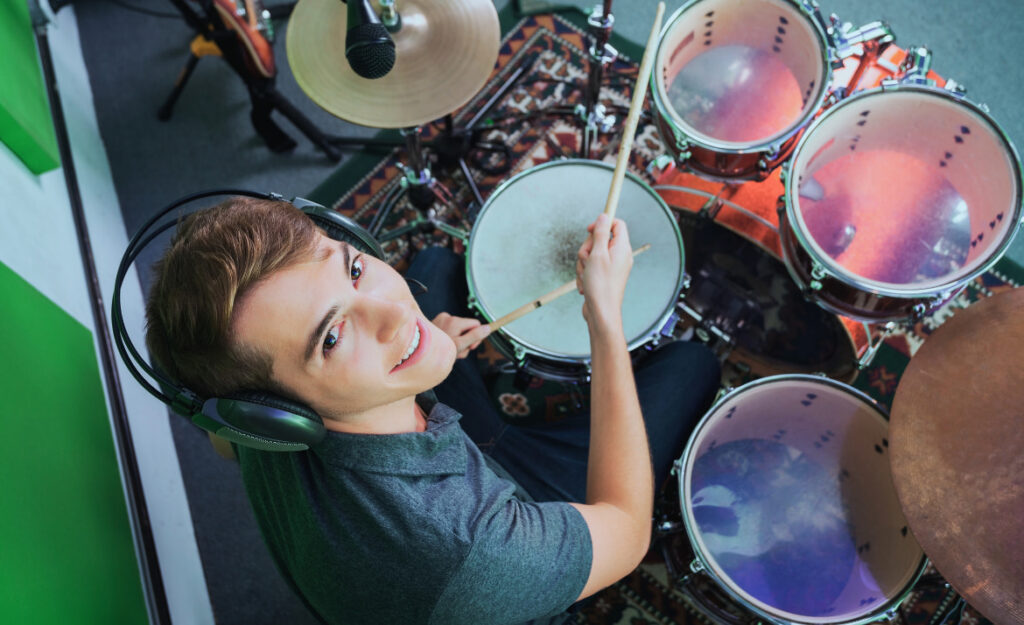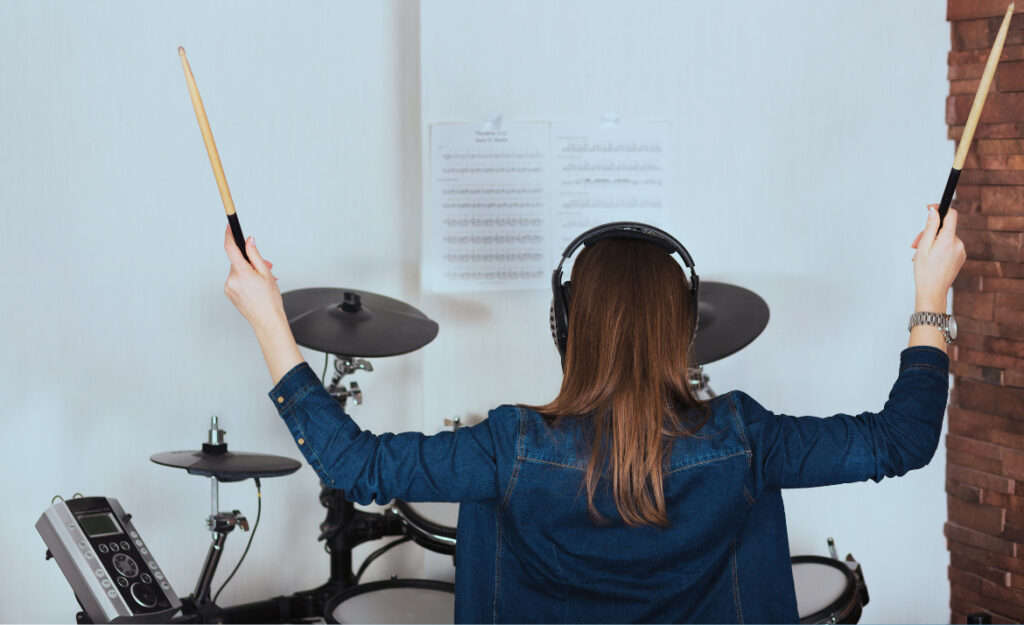Every drummer remembers their first live gig—heart pounding, lights glaring, the subtle pressure to keep the band together. Using click track benefits at that crucial moment can feel like switching from running barefoot to wearing perfectly fitted sneakers: the support is immediate and tangible.
Timing troubles are common on stage. Whether it’s an adrenaline-fueled rush or nerves causing minor rushes and drags, click tracks quietly eliminate uncertainty and give the drummer a calm anchor. Well-used, these tools transform chaos into locked-in grooves night after night.
This article unpacks exactly what click track benefits can bring to drummers facing live stage demands. Explore candid examples, mini checklists, and practical advice for adding precision and poise to your next show—no matter your style or setup.

Stabilizing Live Grooves: Making Every Beat Count
Building consistency with a click track instantly raises a drummer’s reliability on stage. Each steady pulse in your headphones or in-ears strengthens trust between you and your bandmates, letting everyone relax into the performance.
When everyone on stage feels that same backbone, cues like head nods, locked eyes, or subtle foot taps simplify band communication. Drummers who use click tracks consistently find that lock-in moments—those rare, collective “whoa, we’re in the pocket” feelings—start happening almost every night.
Syncing Intros with Confidence
A typical challenge for live drummers arises right as the set begins. Guitarists might look over with a raised eyebrow, expecting you to count in. Instead of guessing, press ‘play’ on your click—two bars later, every instrument launches in perfect unison.
Theater shows especially appreciate this approach. One drummer described their routine: “I wait for house lights to fade, breathe, hit the click, then motion for the band. Everyone’s in together—no stress.”
Try starting each rehearsal by running your count-ins with the click. Over time, it becomes second nature, sharpening your instincts for reliable launches on demand.
Keeping Mid-Song Tempos Honest
By the second chorus, nerves or adrenaline sometimes push drummers ahead of the intended tempo. If other musicians start side-eyeing you, a subtle check-in with your in-ear click can reel everything back to center.
Running fill-heavy sections with a metronome at practice makes it easier to stick with the click live. Drummers report better focus on dynamics and feel rather than just counting, leading to more engaging performances overall.
Use a programmable metronome app to change tempi between soft verses and energetic choruses without manual adjustment—just like pro show techs do every night.
| Scenario | With Click Track | Without Click Track | Next Steps |
|---|---|---|---|
| Bands with tempo changes | Switches are precise | Potential for awkward drags | Map changes in practice |
| Backing track usage | Flawless sync to cues | Manual cues risk mistakes | Test click with tracks |
| Dynamic builds & drops | Energy remains tight | Energy can race or lag | Check dynamics on click |
| Rehearsal productivity | Faster progress | More repetition needed | Introduce click gradually |
| Show unpredictability | Click anchors flow | Panic may spread onstage | Prep alternate tempos |
Integrating Technology: Tools for Every Drummer
Adopting gear suited for click track benefits changes your night from stressful to smooth. Mix monitoring tools and solid hardware decisions let drummers shape exactly when and how they interact with the metronome.
Small investments—like well-fitting in-ear monitors—pay off every show. A backup phone or metronome clip ensures tempo support never fails mid-set. Walking through setup procedures ensures quick, repeatable sound checks.

Pre Gig Checklist: Never Miss a Beat Before You Perform
Discover step-by-step tips on gear, setup, safety, soundcheck, and mental prep to perform like a pro every show.The Right Gear in Action
Drummers who personalize their gear layouts see immediate improvements. For pop gigs, a drummer might say: “My left hand controls the tracks, right hand’s ready for the count-in. If anything stutters, I swap to the spare without missing a beat.”
- Pick in-ear monitors: Secure a clear click mix; prevents missed cues.
- Mount metronome or playback device: Place where hands can quickly start/stop.
- Bring spares: Always pack backup cables and battery power; peace of mind on high-pressure gigs.
- Label song templates: Title setlist files for instant mid-show access if a song is called out of order.
- Check outputs: Use sound check to test metronome and music track balance in headphones; avoid painful surprises on show night.
Practicing this checklist each setup ensures drummers never scramble as the house lights dim. Calm, methodical routines reinforce trust with techs and bandmates alike.
Mixing Clicks into the Live Monitor
Mixing the click into a personal monitor or in-ear system advances both privacy and control. Techs commonly run dual lines: one for the click, one for the full band—it guarantees no lost counts mid-set.
- Assign click as a separate channel: Clean isolation lets you set the perfect click volume.
- Pan click slightly off-center: Keeps headroom for critical drum mic bleed in the mix.
- Batch adjust levels as needed: Pre-program click loudness for distinct song energy levels.
- Communicate with front-of-house: Confirm no click spill into the house PA or broadcast.
- Use tactile cues: Some drummers add subtle stick movement or foot taps tied to the click, helping sync complex patterns without missing the groove.
These strategies let you tune out distractions, lock into the rhythm, and push the whole ensemble forward with clarity.
Pocket Groove Building: Drumming with Purpose and Precision
Using click track benefits goes beyond cold precision. A well-set click empowers drummers to focus on intentional groove, not just machine-like timing. This fine-tuned attention makes every part of a song feel alive and connected.
Envision the click track as a safety railing during a tricky hike—it’s there to help you climb confidently, giving freedom for musical dynamics and stage expression. Guests notice the difference immediately—pocket drumming transforms listeners’ feet into natural metronomes.
Shaping Dynamics While Clicking
Drummers learn to let the click become background rather than distraction by practicing both soft and explosive dynamics with the metronome active. The focus shifts from “don’t miss the beat” to “how can I make this moment feel best for the music?”
One drummer’s regimen: alternate chorus grooves softly for two bars, then peak hard—never losing click contact. Start slowly, then add fills, tightening your internal clock with each round.
Removing the click mid-song at rehearsal can show if dynamics stray. Repeat sections with and without click to internalize solid, expressive time feel for every band moment.
Creating “Human” Feel on Top of the Click
An effective trick is to let the click act as a reference, not a ruler. Play slightly behind or ahead to create push-and-pull, mimicking classic studio recordings’ “imperfect” energy.
For ballads, try landing ghost notes a tinge back from the click. Fast funk or punk? Place strong backbeats slightly ahead—an energy boost your band will feel instantly.
Experiment with micro-movements between click subdivisions during solo practice. Over time, you’ll discover where your personal groove sweet spot feels natural, even with click engaged.
Adapting to Venue and Band Scenarios: Real-World Drumming
Readjusting click track use for different venues or bands is essential for practical drummers. Stage size, acoustics, stage monitoring, and setlist complexity all influence click effectiveness and headphone mixing tactics.
Walking through realistic performance situations prepares you to make live decisions. Experienced drummers develop adaptable protocols—always planning for venue quirks or setlist changes at the last minute.
Outdoor Festivals with Unpredictable Sound
Outdoor gigs, from summer fairs to beachside stages, throw curveballs like wind gusts, echo, and invisible crowd cues. A drummer told his band, “I’ll lead count-offs, stick to the click, and adjust tempo if crowd energy changes.”
Key moves: route in-ears through a secure wireless pack, assign backup click via a phone app, and rehearse with both WAV and MIDI files. This guarantees steady time, rain or shine, while keeping hands free for fast mid-set adjustments.
After show, make quick notes for next time: mark which settings and click levels worked best for each outdoor stage. This one-minute step sharpens your live workflow across gigs and tours.
Switching Click Setups for Different Bands
Bands shifting genres—rock to jazz to pop—require distinct click solutions. Some might want click for intros only; others might prefer click from start to finish. Prepare multiple session files for fast swapping, labeled by band and song arrangement.
In rehearsals, clarify click cues in advance. A sample talk-through: “Intro click only, full band in on verse two. No click on the bridge break.” This ensures seamless collaboration regardless of style or setlist order.
Testing each band’s norms and writing a cue sheet pre-show helps everyone roll with quick transitions. Practice this at home with recordings of each group, tweaking files as needed after run-throughs.
Reducing On-Stage Nerves and Building Reliable Stage Presence
Consistent click track use lowers stress at every show. When drummers trust their timing tools, body language relaxes, breathing steadies, and song transitions flow without forced tension.
Audiences sense this confidence—bandmates too. Instead of fighting tempo fluctuations, performers lean into the groove. Live recordings sound clearer, letting producers capture authentic energy without post-show patch-ups.

Fast Recovery from Technical Glitches
If a click track stops mid-song, experienced drummers have a recovery plan. Quickly signal the band with a subtle gesture or cue phrase. Resume a steady beat by referencing internalized tempo from rehearsals.
To minimize issues, run soundcheck simulations with clicks shutting off temporarily. Ask a friend to kill the click source and give a hand signal—restart without panicking. Each successful recovery builds trust among all players on stage.
Adopt the phrase, “If the click cuts, keep the groove going.” This concise directive lets bands improvise after the unexpected with discipline and style instead of stress.
Building Focus and Muscle Memory
Repeated click rehearsals stamp tempo and pattern cues deep into your memory. When playing nightly sets, these imprinted habits allow drummers to deliver high-energy performances while also engaging visually and emotionally with the crowd.
Muscle memory runs hands and feet while headspace remains available for stage awareness—catching spontaneous changes, solos, or audience interaction effortlessly. The result: controlled but never mechanical shows that invite the crowd into each beat.
Finishing each practice session with a quiet visualization helps consolidate gains. Picture the bright lights, the exact moment you count in, and the reassuring sound of your chosen click—then step confidently on stage, ready for anything.
Exploring Click Track Myths and Misconceptions
Misunderstandings about click track benefits still surface among drummers. Some believe metronomes restrict artistry, while others think technology might replace “feel” with cold precision. Distinguishing fact from fiction is critical for picking the right approach.
Seasoned session drummers and teachers frequently debunk these myths by offering workshops or video demonstrations. Attendees try playing along with both metronome and musical backing, instantly noticing smoother transitions and fewer panicked tempo jumps.
- Play “off the grid” on purpose: Experiment with non-click jams for creativity, then reintroduce the click for polish and show-readiness—best of both worlds.
- Adjust click subdivisions: Eighth notes or even sixteenth notes provide greater nuance for complex patterns, giving drummers more expressive range than a single rigid pulse.
- Ask bandmates to weigh in: Some musicians prefer a live “feel” for certain song sections, while others request strict tempo on difficult transitions. Find a balance that feels right for your group.
- Record live shows with and without click: Review both versions objectively, and note which sounds tighter yet retains excitement. Let recordings guide your decisions, not abstract assumptions.
- Tap a mentor for feedback: Show your favorite drummer a clip of you with click and without—they’ll zero in on strengths and suggest concrete tweaks, refining your technique for both live and studio work.
Debunking myths takes experimentation and honest feedback, leading to a more confident, effective performance style—click or no click.
Applying Click Track Benefits for Live Drummers
The benefits of using a click track in live drumming are both practical and transformative. Consistent use shapes skills, relaxes nerves, locks in song structure, and boosts musical connection between performers on stage.
Learning click integration doesn’t stifle creativity. Rather, it frees up attention for groove, dynamics, and audience engagement—giving every note a sense of purpose and every song a reliable pulse.
After reading, try integrating a click into your next rehearsal—and consider recording a set-within-a-set to hear the difference for yourself. With some intent and practice, click track benefits become second nature—empowering you to elevate both band confidence and crowd energy at every show.



